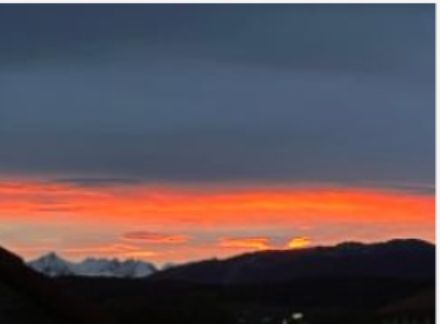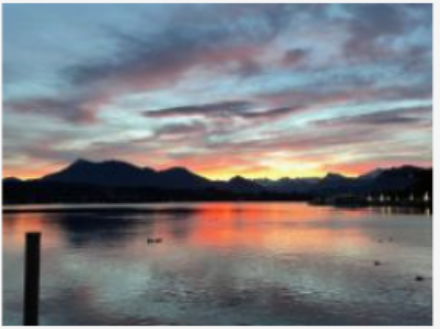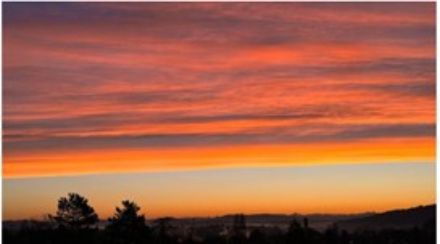Service Navigation
Search
Scientific explanation
In the morning, colour begins to appear in the sky around 30 to 45 minutes before the sun rises above the horizon. At this time, the light is travelling along a relatively long path from the Sun to the Earth. It is the long-wavelength, reddish light rays that reach the human eye, as opposed to the short-wavelength, bluish light rays of midday sunlight.
Another key factor is the shallow angle of the incoming solar rays. Rayleigh scattering is the term for when light scatters off gas molecules in the atmosphere as it travels. During sunset, when light travels a longer path through the atmosphere, only the red component of light remains. The intensity of the colours is very much dependent on the weather – or, more specifically, on the number of air molecules that are in the atmosphere, depending on the weather conditions. Water particles, dust particles, smog, churned up desert sand and volcanic ash can all intensify the effect.
In the evening, the same phenomenon can be observed in reverse order when the meteorological conditions are right. The sun sinks below the horizon, the angle of incidence of the light becomes shallower, the path travelled by the light through the atmosphere becomes longer, and the blue components of the spectrum are more severely scattered, which means that the remaining light appears reddish – and, hey presto: a glorious sunset!

Sunrise, taken from Thalwil.
Weather proverb
As the old proverb goes: “Red sky at night, shepherd’s delight. Red sky in the morning, shepherd’s warning”. This saying suggests that cloudy or rainy weather typically follows a red sky in the morning, whereas after an evening red sky, sunny weather can be expected the next day.
The idea is based on prevailing westerly weather situations in Central Europe. Morning redness indicates clear skies or scattered clouds in the east where the sun rises. At the same time, clouds begin to move in from the west, illuminated by the rising sun. These cloud formations are harbingers of an approaching front, and the day often turns cloudy. However, this holds true only when the weather fronts come from the west.
When there is a red sky at night, the setting sun in the west illuminates the departing cloud formations of a front that is heading eastward. Meanwhile, skies in the west will be mostly clear. With a westerly wind, the weather front often moves eastward by the next day, leading to sunshine the day after a red sky in the evening. If another weather front follows closely behind, however, a cloudy day can still follow a red sky at night.

Oberrieden

Ecuvillens

Lucerne

St. Peterzell

Zofingen

Sunrise in Dietlikon.

Image from Schaffhausen.
How does a red sunrise develop?
It is the different wavelengths of light that are the critical factor in a colourful sunrise. When light collides with gas molecules on its way through the atmosphere, it changes direction. This phenomenon is called scattering.
In the atmosphere, short-wavelength, blue light is scattered more strongly than long-wavelength red light. During the day, when the path travelled by the sun’s light is short, it is mainly blue light that is scattered, which is why the sky appears blue. [Link Wetterlexikon: https://www.meteoswiss.admin.ch/weather/weather-and-climate-from-a-to-z/sky-blue-the-colour-of-the-sky.html] A colourful sunrise or sunset both occur when sunlight is scattered off the gas molecules in the atmosphere. When the sun is low in the sky, the path of sunlight through the atmosphere is longer, causing more blue light to be scattered and filtered out, leaving the remaining light to appear reddish.